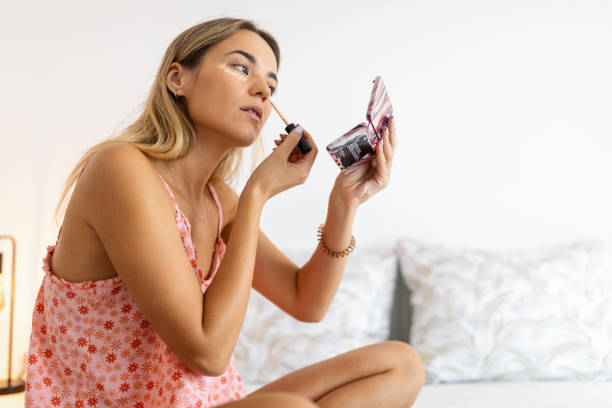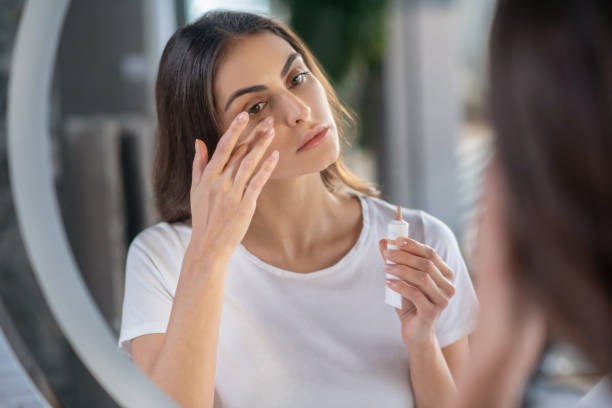A concealer is an essential tool in any makeup arsenal, designed to cover up imperfections such as dark circles, blemishes, and discolorations, creating an even skin tone and flawless complexion. Its versatility allows it to be used for highlighting and contouring, making it a multifunctional product that can truly transform one’s appearance. However, to harness its full potential, it is crucial to understand the different types, how to choose the perfect shade, the correct application techniques, and how to ensure long-lasting wear. With the right knowledge and practice, anyone can become a pro at using concealer.
Types of Concealers
Concealers come in various forms, and choosing the right one depends on the specific need and skin type. Here’s a rundown of the most common types:
- Liquid Concealer: Ideal for most skin types and provides a buildable coverage. It’s especially effective for oily skin due to its typically matte finish.
- Cream Concealer: Offers more substantial coverage and is better suited for dry skin or for covering significant discoloration or scars.
- Stick Concealer: As the heaviest type, it’s perfect for targeted coverage and works well for blemishes and spots. However, it may not be the best for under-eye areas as it can settle into fine lines.
- Color Correcting Concealer: Available in various hues, each designed to target specific issues such as redness (green), sallowness (purple), or dark circles (peach or orange).
- Hydrating Concealer: A newer addition, these usually have a serum-like consistency and are infused with moisturizing ingredients, ideal for maturing or dehydrated skin.
Understanding your skin’s needs and the purpose you wish your concealer to serve will guide you in selecting the right type.
How to Choose the Right Concealer Shade
Choosing the correct shade of concealer is pivotal to achieving a natural, seamless blend with your skin. Here’s how to do it: Firstly, determine the use of your concealer. If it’s for brightening, such as under the eyes, pick a shade one to two tones lighter than your foundation. For concealing blemishes or spots, choose a shade that exactly matches your skin tone or foundation. The right undertone is also crucial; understand whether you need a warmer or cooler shade by examining the undertones in your skin. Additionally, it’s perfectly fine to have more than one shade of concealer in your makeup kit to accommodate different areas of the face or changes in skin tone due to sun exposure or other reasons. To test shades, apply a small amount on your jawline and see which one disappears into your skin in natural light. Don’t be afraid to mix concealer shades to customize a perfect match for your skin. Also, consider investing in a color correcting palette for more customized coverage.
Application Techniques for Concealer
The way you apply concealer can drastically affect its efficacy. Here are some tips for flawless application: Always apply concealer after your foundation to avoid smearing and to use less product. For under-eye concealer, apply in the shape of an inverted triangle with the base along your lower lash line and the point toward your cheek, to illuminate and lift the face. Use a small concealer brush or a beauty sponge to blend gently. For blemishes, use a clean brush to dot concealer directly on, then lightly pat with a finger to blend without wiping the product away. For highlighting, choose strategic areas like the bridge of your nose, center of your forehead, brow bones, and chin. Remember to set your concealer with a loose setting powder to prevent it from creasing or moving throughout the day.

Ensuring Long-lasting Concealer Wear
To ensure your concealer stays put all day, follow these steps: Prep your skin with a good moisturizer and a primer to create a smooth canvas. This is especially important under the eyes, as dryness can cause concealer to cake or settle into fine lines. After applying your concealer, set it with a transparent setting powder, tapping away any excess. Avoid powdering areas that you want to keep luminous, like the top of your cheekbones. If you have very oily skin, consider a setting spray for an extra layer of staying power. Lastly, carry a small concealer for touch-ups if necessary, particularly if you have a long day ahead or are combating very stubborn blemishes or discoloration.
Common Concealer Mistakes to Avoid
Avoid common pitfalls with concealer to truly enhance your makeup game:
- Using Too Much Product: This can make areas look cakey. Less is more; build coverage slowly.
- Wrong Shade: Using a concealer that is too light or dark can draw attention to the areas you’re trying to conceal.
- Incorrect Application: Applying in a swipe motion under the eyes can actually emphasize fine lines; instead, pat and press the product into the skin.
- Ignoring Color Theory: Failing to neutralize discolorations with color correcting concealers can make dark circles and redness harder to cover.
- Not Setting Your Concealer: This can result in your concealer creasing and wearing off quickly.
By being mindful of these common errors, you can ensure a more polished and enduring result.
Conclusion
In conclusion, a good concealer can be a true game-changer in your makeup routine. Whether you’re looking to cover up blemishes, dark circles, or simply brighten certain areas of your face, the key lies in choosing the right type, finding the perfect shade, and mastering the application techniques. Remember to consider your skin type, the purpose of the concealer, and to set your makeup for a long-lasting look. Avoid common mistakes, and you will achieve a flawless, photo-ready complexion every time.
FAQs
- Q: How do I find my concealer shade? A: Your concealer shade should match your skin tone for blemishes and be 1-2 shades lighter for highlighting purposes. Always test shades on your jawline in natural light to find the best match.
- Q: Can I use concealer without foundation? A: Yes, if your skin is relatively even-toned and you wish to cover only specific blemishes or undereye circles, you can use concealer on its own.
- Q: Should concealer be applied before or after foundation? A: Concealer should generally be applied after foundation to avoid smearing and to ensure you’re using the minimal amount needed for coverage.
- Q: How can I prevent my concealer from creasing? A: Use a lightweight formula, apply a primer, set your concealer with a fine, loose setting powder, and avoid applying too much product.
- Q: Do I need to use a color correcting concealer? A: It depends on what you need to conceal. If you have significant discoloration, such as dark circles or redness, a color correcting concealer can help neutralize these tones for a more natural finish.
